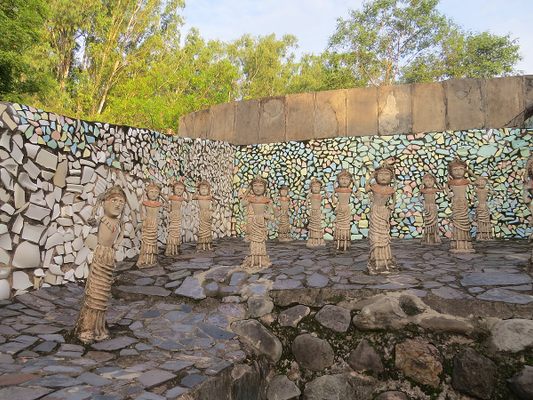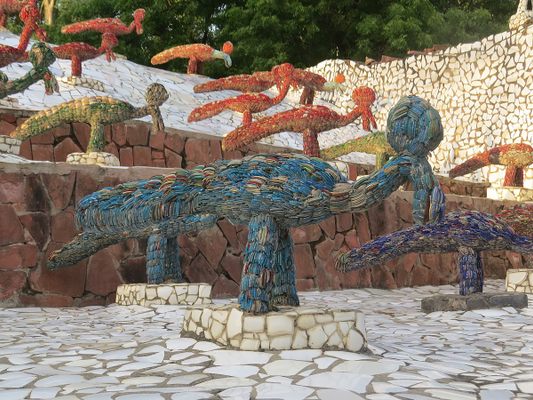About
In 1957, Nek Chand, a lower-level government inspector, began collecting rocks behind a government building in Chandigarh, northern India. His innocent hobby began to expand, and during the 1960s, Chand began assembling the rocks, along with pieces of trash he had collected into an exhibition. Construction scraps from Le Corbusier's vision for Chandigarh, along with broken household items began to take shape as sculptures, and the Nek Chand Saini was born.
Although his work was illegal and would have been shut down had it been discovered, in 1976 Chand showed the garden to his superiors and was subsequently given permission and a labor force to further his artistic pursuits. From that time, Chand gave up government work and focused on the garden. Chand and a team of 50 men began heavy work in the mid-1970s and gave the garden a new life force. Sculptures of groups of people, all comprised of recycled materials, took shape around the garden.
In many ways, the Rock Garden looks more like a fully functioning village than an art exhibition or statuary. Hundreds of statues dance across the mosaic tiles of the garden, inviting visitors to join in the merriment of Chand’s work. Visitors are even able to join in the community, by using the swing that is suspended beneath the great arches within the garden.
Wild gangs of elephants, monkeys, and other animal sculptures also populate the garden, speckling the interior with life. In a country known more for the slums that grow out of its waste, the recycled outsider art of the Rock Garden is an internal triumph and an external spectacle.
The garden now spans over 30 acres connected throughout by carefully designed walled passages and trails. Along with the jubilant sculptures, a series of waterfalls designed by Chand, provides a lush atmosphere, giving the entire garden the feeling of a living, breathing jungle community.
One of the largest waterfalls descends from a pavilion in the garden, where visitors can walk directly up to the splashing rock wall. Chand’s garden is especially unique in this sense, as the whole area has been created for a whole-body experience of walking, touching, and enjoying the beautiful community that began as a small rock collection.
The garden is a living and colorful tribute to art and ingenuity and a wholly Indian exhibition. It is detailed down to the mosaic tiling that visitors walk across in the garden. From the time of its creation, the garden has received worldwide acclaim and can easily be visited from Chandigarh.
Related Tags
Know Before You Go
Train from New Delhi to Chandigarh, The Shatabdi Express, runs two or three times daily from New Delhi to Chandigarh. The journey lasts approximately three hours. The Rock Garden is situated in the north of Chandigarh, Sector 1, and is known by everyone in the city.
Delhi and Rajasthan: Colors of India
Discover Colorful Rajasthan: From Delhi to Jaipur and Beyond.
Book NowPublished
August 5, 2011

























































